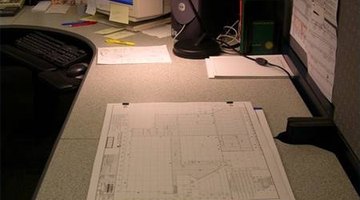Working in a service industry as a heating, venting and air conditioning (HVAC) maintenance technician is one of the most important professions in the field. The next step obtainable for an HVAC technician is to become an HVAC CAD (Computer Aided Design) designer. A person with the necessary credentials to work as an AutoCAD or CAD designer can demand higher pay. One can land a job working for commercial and industrial buildings drafting HVAC systems. There are courses offered online that deals with HVAC CAD design where students can learn HVAC drafting, HVAC duct design, paper to CAD conversion, PDF to CAD conversion, paper sketch to CAD drawing, CAD design services and other services involved in CAD design.
Purpose
An HVAC CAD design online training program aims to provide education through the Internet. HVAC CAD training will primarily tackle architectural and structural services required for home building layouts primarily dealing with heating, venting and air conditioning. With HVAC CAD online training, students will use architectural drawings using a computer to create layouts, project elevations, detailed 2D and 3D presentation drawings presented in digital formats.
Features
The media used in HVAC CAD online training is in digital format. The students will learn the processes, tools, methodologies and drafting designs using the CAD software. The software used provides two- and three-dimensional digital formats that enhance the design and drafting experience of the students. An example of professional AutoCAD software used in most online training schools is Shark software. It provides drafting, designs and modeling presentation solutions for professional applications.
Types
There are two main types of HVAC CAD online training. One is the pure online training that students can choose to complete based on their own time and comfort level. This is similar to an independent study program wherein the student goes through the materials and tools provided, with no or very little interaction with an instructor. The other type is an instructor led online training class, wherein students attend scheduled training sessions with an instructor and other students in a virtual classroom environment. This has a pre-determined deadline assigned by the school. Most universities also may provide a combination of these two types for busy students fused with on-campus classes. AIU online and University of Phoenix Online are two examples of schools that provide online training for HVAC CAD.
Benefits
One of the main benefits of an HVAC CAD online training is that students can opt to complete the entire course at their own time and pace. This is particularly important for busy professionals who are already working in the field but would like a diploma to show completion of formal studies. Finishing a formal online education on HVAC CAD can help professionals reach their career goals and apply for promotions or senior level positions with either the same company or somewhere else. With a degree in HVAC CAD, one would be able to perform not only troubleshooting of heating, venting and air conditioning, but be able to design as well.
Considerations
Before enrolling in an online school that provides training for HVAC CAD, students should do their own background checks of the school. Check curriculum, prices, schedules and also references. Check the school's success rate in placing students in jobs or helping students reach their goals. Check if the school has the license to provide this specialized training. Also, check that the schedule will work out for you even if it is online. Find out if the school provides realistic goals. Check if the school will provide tips and pre-requisites in passing the licensing exams. Check if the fees include books, CDs, lab and software. If you are satisfied with your answers, narrow down your choices and then choose the best online training school that would work for you.
Related Articles
Writer Bio
Josienita Borlongan is a full-time lead web systems engineer and a writer. She writes for Business.com, OnTarget.com and various other websites. She is a Microsoft-certified systems engineer and a Cisco-certified network associate. She graduated with a Bachelor of Science in medical technology from Saint Louis University, Philippines.











